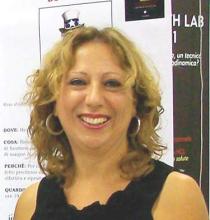Workers performing fluoroscopically guided cardiovascular procedures are at significantly higher risk of a diverse array of health disorders compared with nonexposed subjects, according to a survey.
Though cancers and ocular, skin, and thyroid disorders are recognized risks of working with low-dose radiation, as are orthopedic problems associated with wearing heavy lead aprons, the new study, published online April 12 in Circulation: Cardiovascular Interventions, adds weight to emerging concerns about lesser-known risks.
In addition to higher prevalence of skin lesions, cataracts, thyroid disorders, cancer, and orthopedic problems, exposed workers saw significantly higher prevalence of hypertension, hypercholesterolemia, and depression or anxiety, compared with controls.
Maria Grazia Andreassi, Ph.D., of the CNR Institute of Clinical Physiology, in Pisa, Italy, led the study, which used questionnaires to collect health, exposure, and demographic information from 466 workers in cardiac catheterization laboratories in Italy: 218 interventional cardiologists and electrophysiologists, 191 nurses, and 57 technicians. Radiation exposure was estimated based on subjects’ occupational radiological risk score (ORRS), which takes into consideration years of work, caseloads, and proximity to the radiation source in the lab.
The researchers administered the same questionnaires to 280 health workers who did not have occupational radiation exposure. The two groups were well matched for age, sex, education level, alcohol use, and body mass index, though current smoking differed significantly (27% of lab staff vs. 23% of unexposed workers).
As expected, orthopedic injuries were markedly higher among the lab workers, with 30% reporting disorders compared with 5% of controls (P less than .001). Nearly 5% of the lab workers had cataracts, compared with less than 1% of the nonexposed (P = .003), and risk increased for subjects with more years in the lab. Cancer was higher among exposed participants (2.6% vs. 0.7%), a difference that did not reach statistical significance. However, a significant trend was seen for cancer risk increasing across duration of exposure (Circ Cardiovasc Interv. 2016;9:e003273).
In the composite endpoint of cataract and cancer, a surrogate for disease associated with occupational exposure to radiation, the researchers found that the interventional cardiologists and electrophysiologists had a significantly higher prevalence than did the nurses and technicians (69% vs. 22% and 9%, respectively; P = .03).
Furthermore, the cancer in physicians occurred more often in the left side, when laterality was applicable, in 67% of cases, whereas the malignancy was left-sided in 33% of cancers occurring in nurses and technicians.
No significant differences in cardiovascular events were seen between the groups. However, hypertension and high cholesterol were more prevalent in cath lab workers, with adjusted odds ratios of 1.7 (95% confidence interval, 1-3; P = .05) and 2.9 (CI, 1-5; P = .004), respectively, for highly exposed subjects, compared with controls.
Last year, in a separate study, Dr. Andreassi’s group reported that exposure to low-dose radiation over time may increase carotid intima-media thickness, an early indicator of vascular injury, among cath lab workers (J Am Coll Cardiol Intv. 2015;8:616-27).
Anxiety and depression occurred in 12% of exposed subjects, compared with 2% of controls. The finding could reflect high occupational stress, the researchers wrote in their analysis, or may be an effect of radiation, “which is especially relevant on the unprotected head of the first operator and at chronic low doses may impact detrimentally on hippocampal neurogenesis and neuronal plasticity.”
The researchers acknowledged the possibility of selection bias in their study, favoring “a possible disproportionate contribution of respondents with existing health issues, who may reasonably think that their complaints are occupationally related,” they wrote. They also noted that the study was not designed to directly assess radiation dose, in part because dosimeters were not regularly worn in some of the settings where subjects worked. Finally, the radiation-exposed group had more cardiovascular risk factors. Nonetheless, the findings highlight the need to “spread the culture of safety” in cardiac cath labs, the researchers wrote.
There is now “more than enough information for us to conclude that the interventional catheterization laboratory is not a healthy workplace,” Dr. Lloyd W. Klein and Dr. Mugurel Bazavan of Advocate Illinois Masonic Medical Center, and Rush Medical College in Chicago, wrote in an accompanying editorial.
Finding “the courage to change business practice,” they wrote, “is the only path to innovative cath laboratory design and shielding techniques that can prevent these occupational hazards” (Circ Cardiovasc Interv. 2016;9:e003742).
Dr. Andreassi and colleagues disclosed no conflicts of interest related to their study, and Dr. Klein and Dr. Bazavan disclosed no conflicts related to their editorial.



